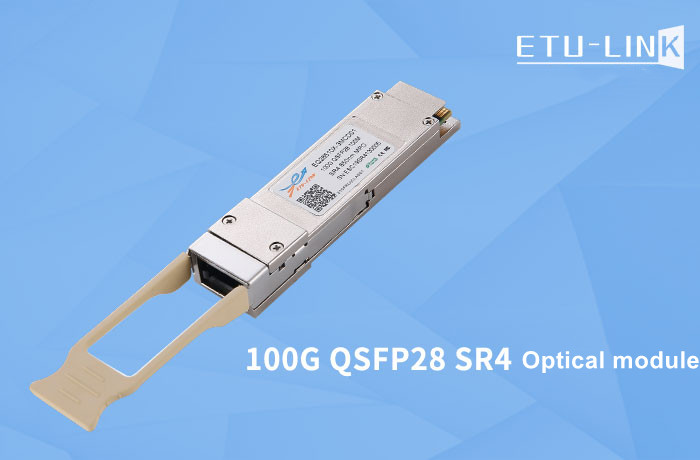
What are the core components of the optical module?
As an important part of the optical fiber communication system, the optical module plays the role of photoelectric conversion. In this article, ETU-LINK will introduce to you what are the core components of the optical module?
1. TOSA: Its main function is to convert electrical signals to optical signals, including lasers, MPD, TEC, isolator, Mux, coupling lenses and other devices, including TO-CAN, Gold-BOX, COC (chip on chip), COB ( chip on board) and other packaging forms. For optical modules used in data centers, in order to save costs, TEC, MPD, and isolators are not necessary items. Mux is also only used in optical modules that require wavelength division multiplexing. In addition, the LDD of some optical modules is also encapsulated in TOSA. In the chip manufacturing process, wafers are epitaxially made into laser diodes. Then the laser diode, matched with filter, metal cover and other components, packaged into TO can (Transmitter Outline can), then this TO can and ceramic sleeve and other components are packaged into optical sub-module (OSA), and finally matched with electronics sub-module.
2.LDD (Laser Diode Driver): Convert the output signal of the CDR into the corresponding modulation signal to drive the laser to emit light. Different types of lasers need to choose different types of LDD chips. In short-distance multi-mode optical modules (such as 100G SR4), generally speaking, CDR and LDD are integrated on the same chip.

3. ROSA: Its main function is to convert optical signals to electrical signals. The built-in devices mainly include PD/APD, DeMux, coupling components, etc. The package type is generally the same as TOSA. PD is used for short-distance and medium-distance optical modules, while APD is mainly used for long-distance optical modules.
4. CDR (Clock and Data Recovery): The function of the COR chip is to extract the clock signal from the input signal and find the phase relationship between the clock signal and the data, which is simply to recover the clock. At the same time, CDR can also compensate for the loss of signals on wiring and connectors. Generally, CDR optical modules are used, of which most of them are optical modules with high speed and long-distance transmission. For example, 10G-ER/ZR. The optical module using the CDR chip will be locked in rate and cannot be used under frequency reduction.

5. TIA (Transimpedance amplifier): used with detectors. The detector converts the light signal into a current signal, and the TIA processes the current signal into a voltage signal of a certain amplitude. We can simply understand it as a large resistance. PIN-TIA optical receiver is a detection device used in optical communication systems to convert weak optical signals into electrical signals and amplify the signals with a certain intensity and low noise. Its working principle is: the photosensitive surface of PIN is detected when light is irradiated, due to the reverse bias of the p-n junction, the photo-generated carriers drift under the action of the electric field, and the photocurrent is generated in the external circuit; the photocurrent is amplified and output by the transimpedance amplifier, thus realizing the conversion of the optical signal into an electrical signal, and then the function of preliminarily amplifying the electrical signal.
6. LA (Limiting Amplifier): The output amplitude of TIA will change with the change of the received optical power. The role of LA is to process the changed output amplitude into an electrical signal of equal amplitude to provide a stable voltage for the CDR and decision circuit signal. In high-speed modules, LA is usually integrated with TIA or CDR.
7. MCU: Responsible for the operation of the underlying software, the monitoring of DDM functions related to the optical module and some specific functions.
The above is part of the optical module devices introduced by ETU-LINK. The selection and use of optical modules are completely different according to different scenarios. One of the most important is according to the transmission rate, transmission distance, different wavelength to select the type of laser and modulation.
Categories
New Blog
Tags
© Copyright: 2025 ETU-Link Technology CO ., LTD All Rights Reserved.

IPv6 network supported
Friendly Links:
易天官网